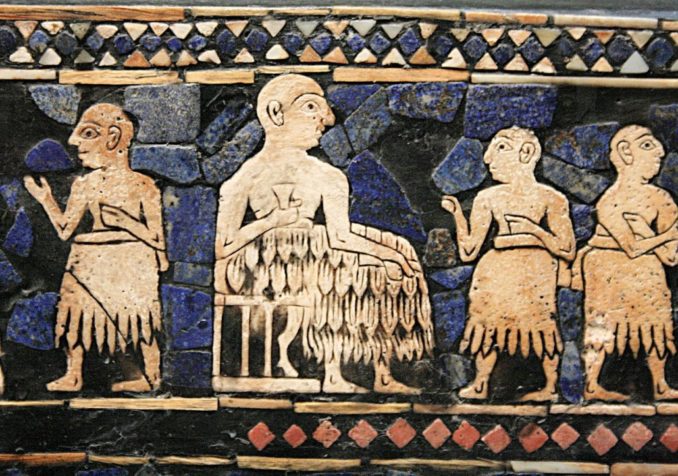
Michel wal (travail personnel (own work)), CC BY-SA 3.0, via Wikimedia Commons
FDR had abolished private ownership of gold money but retained gold as the underlying asset for U.S. currency, exchangeable one for the other. Variations in the price of U.S. currency in ounces of gold served government’s desires in manipulating trade. Note as Patrick Barron has written in summarizing Alasdair Macleod’s work, “gold is money and state fiat currencies are credit”. This means that “money (gold) has no price. Fiat currencies have a price, i.e., a certain weight of gold.”. The exchange feature, gold on demand for currency, was abolished as national reserves shrank in the face of ever-expanding supplies of fiat currency and other forms of “created” money in the development of new financial instruments, still tied to real assets, by the private and public markets. Indeed, although the U.S.A. held the gold reserves of many foreign nations, moving amounts of this gold from one country’s store to another to satisfy changes in international trade, France became concerned and demanded most of their national holdings of U.S. dollars to be exchanged for actual gold. President Nixon then ended the remnants of Bretton-Woods, in that dollars could no longer be exchanged for actual gold; the value of our currency would rest on “the full faith and credit” of the U.S. government. Our fiat currency became a truly imaginary currency. But then Nixon tied our currency to a commodity other than gold, petroleum. The major source of petroleum, the life blood of all economies, Saudi Arabia, agreed to sell their product only for U.S. dollars. This established the U.S. dollar as the reserve currency of world markets, a position maintained until just now. The “price” of our imaginary fiat currency was in barrels of oil.
That first commoditization of our currency as a “reserve” based on oil has now been broken. The Saudis have agreed to accept other currencies for their oil, and soon may join other Eurasian/South American countries in establishing a new currency for international trade based on a basket of commodities and perhaps a basket of members’ currencies in an attempt at maintaining a stable purchasing power of the new currency. Russia and China have been leading these efforts. Russia has the oil and natural gas energy sources needed by the developing world containing most of the world’s population, and China has been corralling the other natural resources of the developing world with their Belt and Road Initiative, an economic version of the First World’s historical military imperialism. The “West” has given away its real assets or refuses to use them in service of some greater social good, and thus has no economic power to counteract this process. Our only remaining assets are virtual: knowledge, technology, services, and consumption. How did we off-load production of real goods?
America’s full faith and credit had been based on its successes in the Industrial Revolution followed by its isolationist rescue of Europe in two world wars. Our outsized success in the Industrial Revolution came from discovery and utility of vast new resources by a rapidly expanding unfettered population of ambitious immigrants. Again, quoting Woolf, “The means of satisfying demand lie in the realm of innovation and industry, supported by the economic calculation determining viability in the market.” The two most critical resources were precious metals (gold and silver) and energy (oil and gas). WW I decimated the most productive portion of Europe’s population, the males of military age. The peace treaty sought to destroy Europe’s most productive economy, Germany. That act virtually guaranteed the onset of WW II. The U.S. extended this WW II rescue throughout Asia after defeat of Japanese imperialism, the sole Asian productive economy. Only the U.S.A. with its massive centrally controlled industrialization of the Arsenal of Democracy had productive capacity, capital, and energy resources to restore Europe as a market partner and establish Asia as a new market partner.
© Nik Bednarski, M.D. 2023



